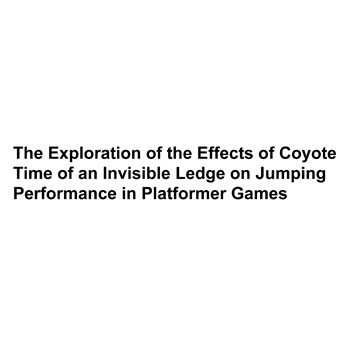Jumping is a game mechanic with a prominent importance. It has a rich historical background, existing since the beginning of games. Many previous research papers have defined and classified such important mechanics into various categories. Other researchers have tried to understand the satisfaction that a jump brings to a video game. However, there has not been research where the correlation of jumping performance and “coyote time"—an e extra time where a character can make action after actually not standing on a platform—or an invisible ledge (to achieve the same result) have been linked. We design our experiment into two parts: an experiment to carry out the testing of participants performance and the correlation of coyote time with it, and an additional questionnaire after to ask feelings associated with the gaming experience. With such design, we aim to somewhat state or explore the relationship of coyote time and invisible ledges on jumping performance and set a future reference to how such factors can help with the immersion or a feeling of a video game.


